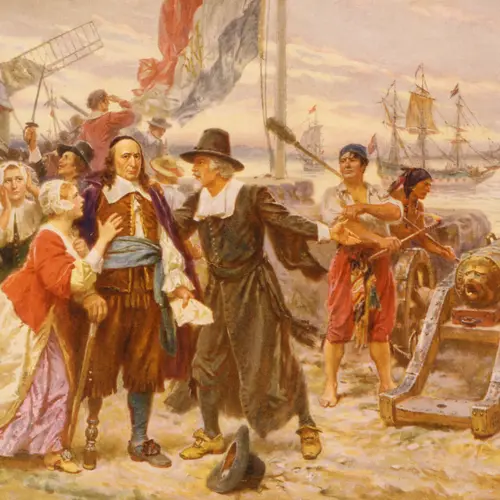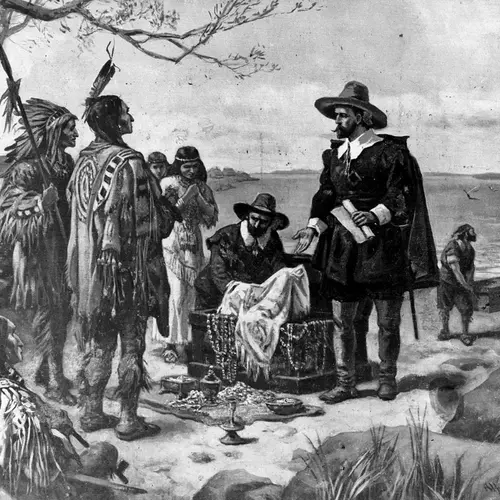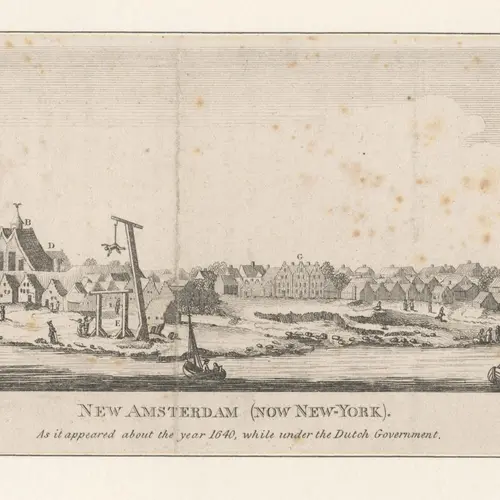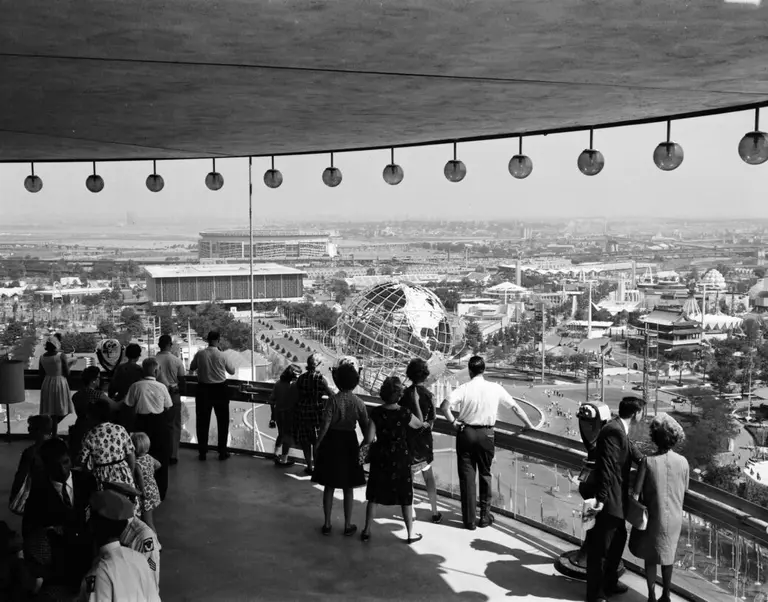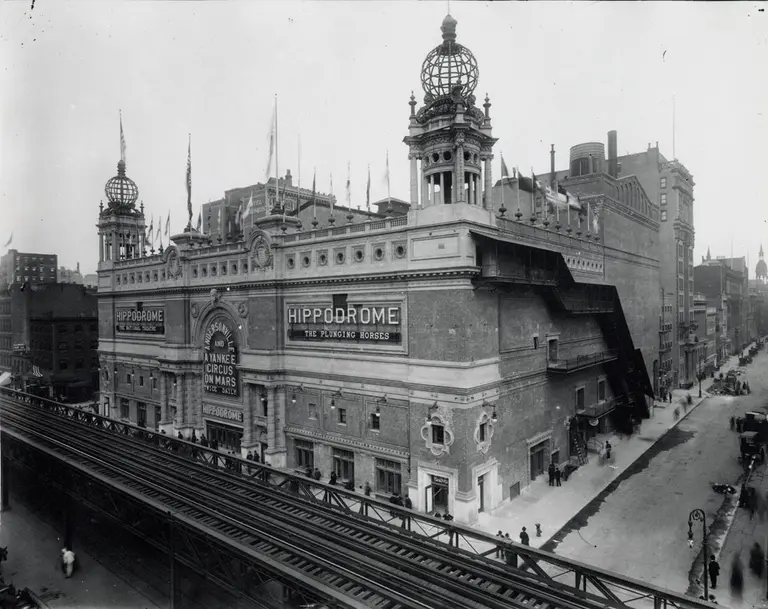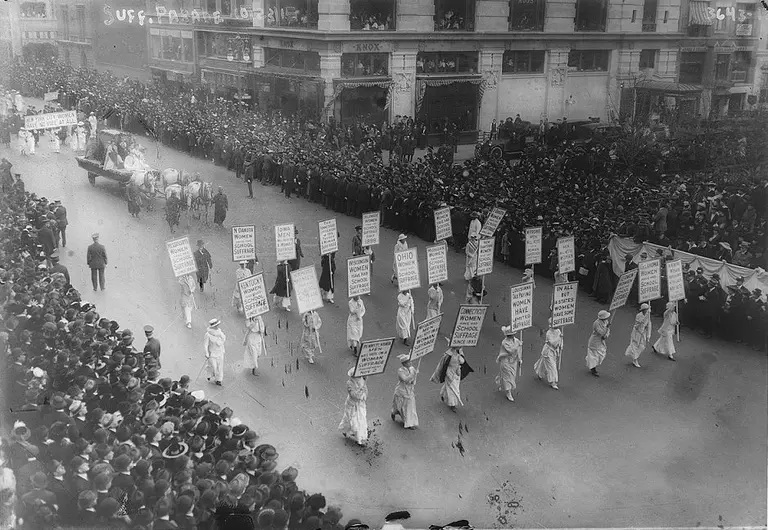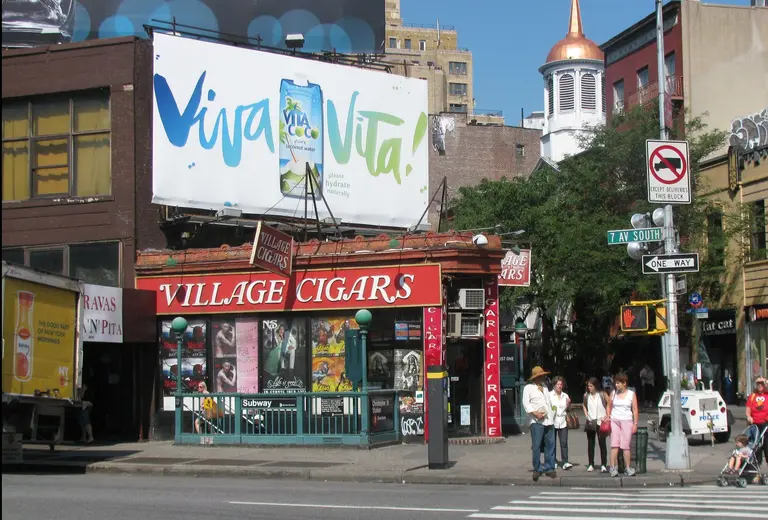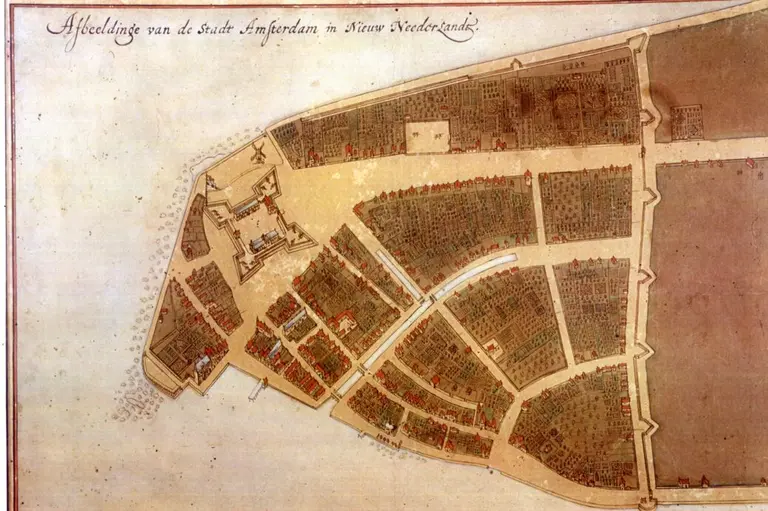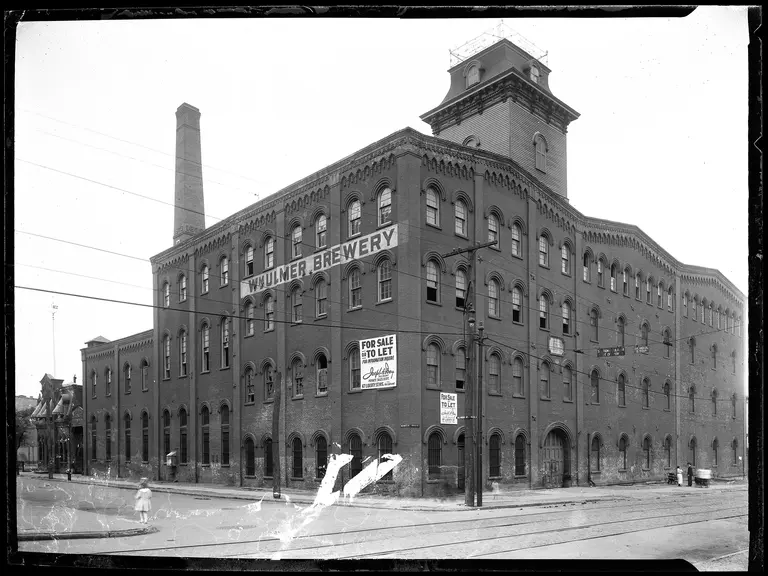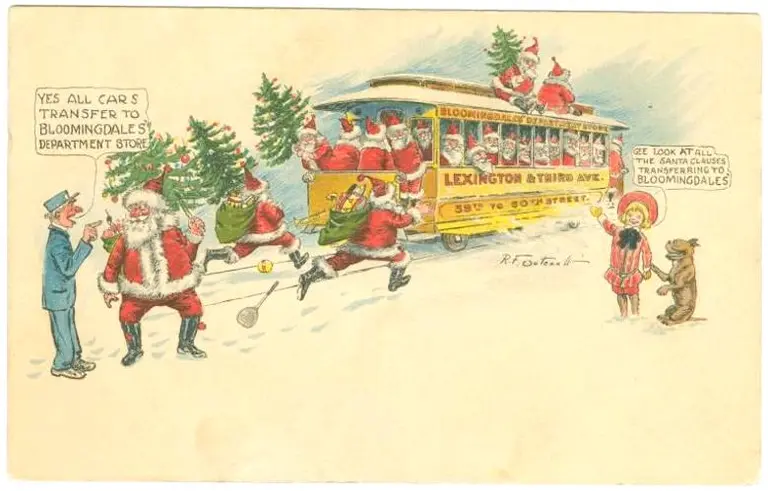356 years ago, New Amsterdam became New York City
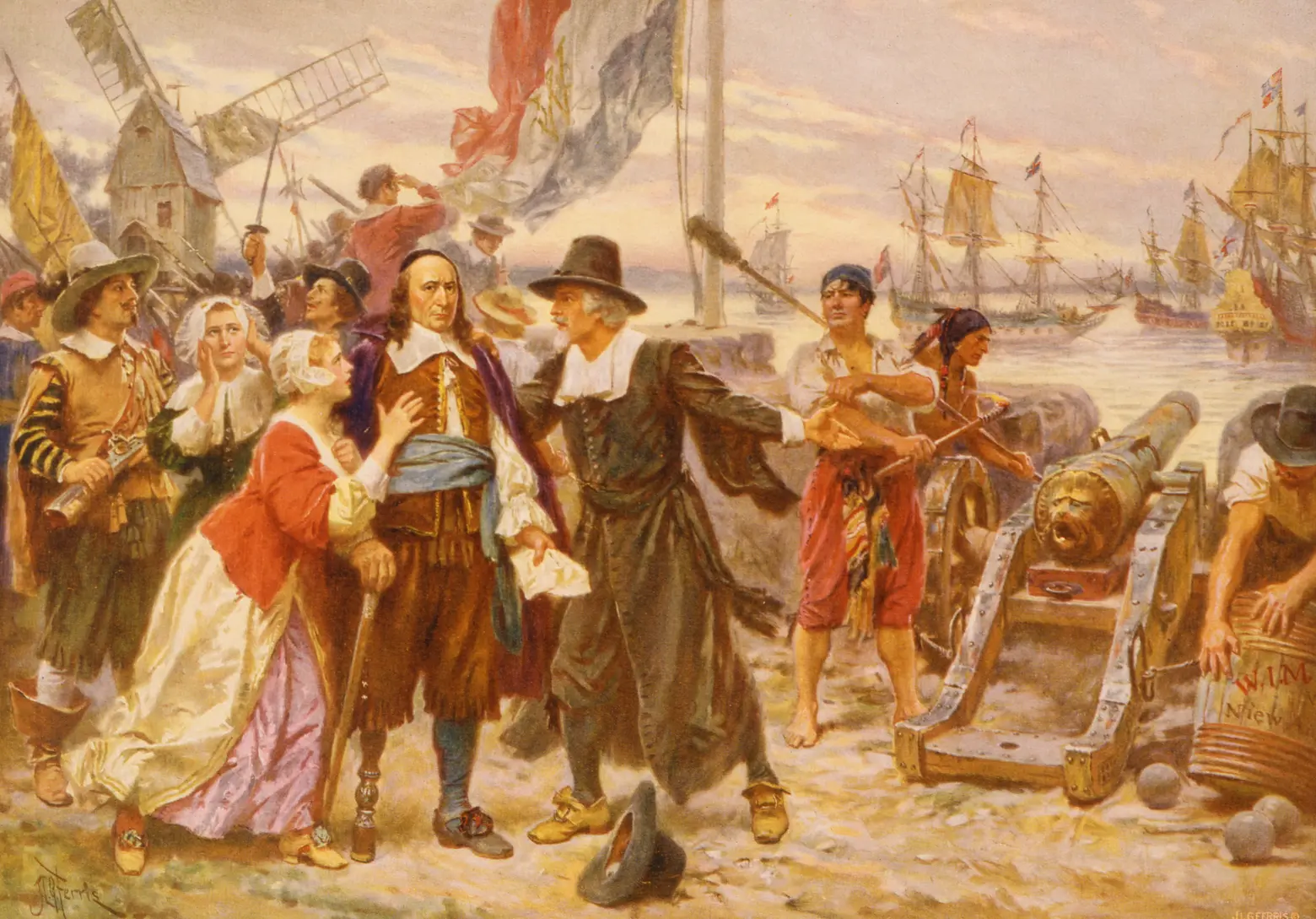
Jean Leon Gerome Ferris’s painting “The Fall of New Amsterdam, which shows New Amsterdam residents begging Peter Stuyvesant to surrender to the British. Via The Library of Congress, Prints and Photographs Division.
On September 8th, 1664, Dutch Director-General Peter Stuyvesant surrendered New Amsterdam to the British, officially establishing New York City. To take part in the fur trade, settlers from the Dutch West India Company first established the colony of New Netherland in 1624, which would eventually grow to include all present-day boroughs, Long Island, and even parts of New Jersey. The following year, the island of Manhattan, then the capital, was named New Amsterdam. But when Stuyvesant’s 17-year run as Governor (from 1647 to 1664) turned unfavorable, he ceded the island to England’s Colonel Richard Nicolls, who had sent four ships with 450 men to seize the Dutch Colony. The name was promptly changed to honor the Duke of York and his mission.
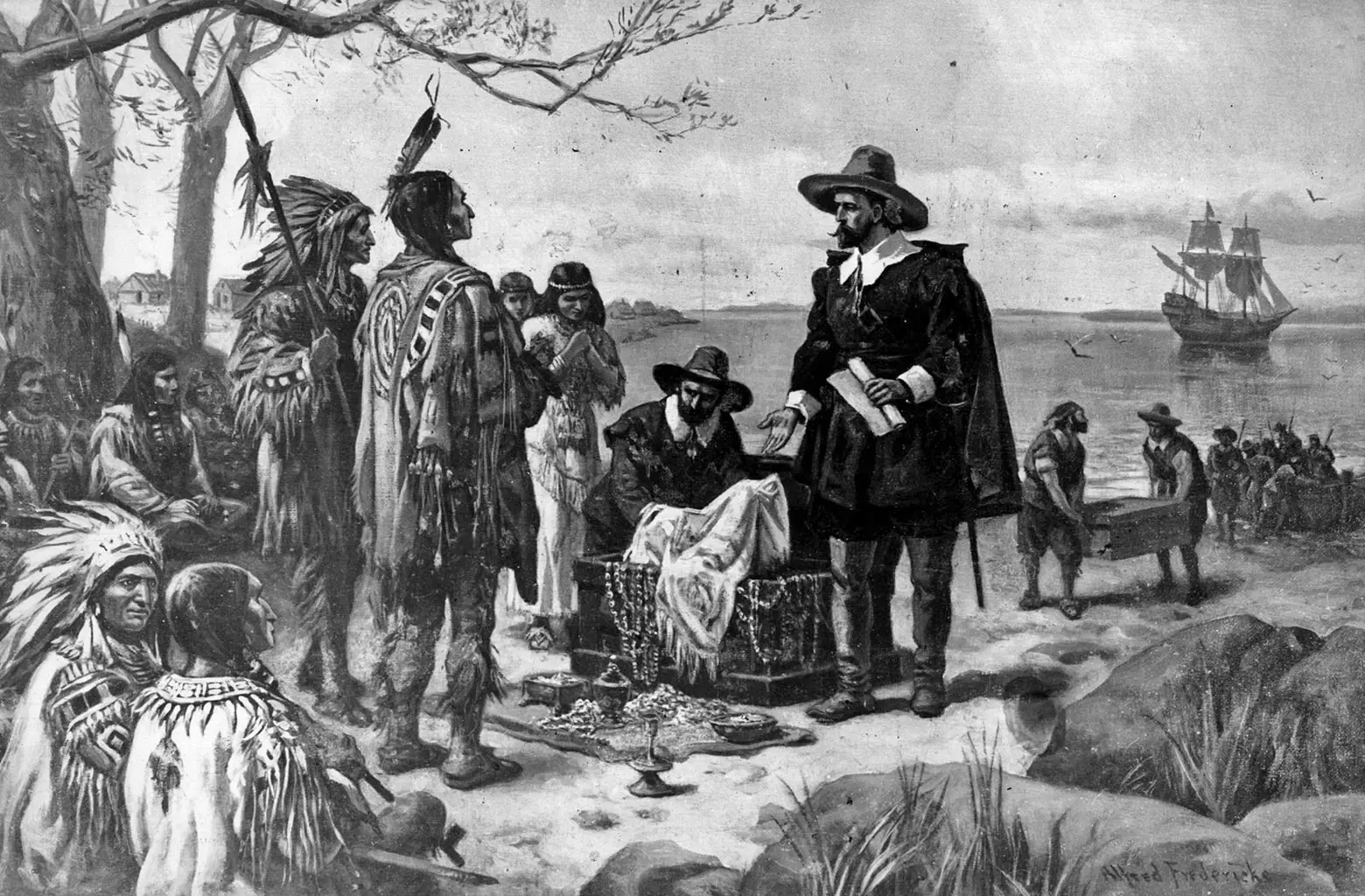 1909 drawing of “The Purchase of Manhattan Island” via Wiki Commons
1909 drawing of “The Purchase of Manhattan Island” via Wiki Commons
In May of 1624, 30 French-speaking Protestant families from present-day Belgium arrived at what is today Governor’s Island aboard the ship New Netherland. Here they built a fort, windmill, and other structures, but later that year, the Dutch West India Company directed them to move to the island of Manhattan to establish Fort Amsterdam; with fears of attacks from other European colonial powers, they wanted to safeguard the Hudson River’s entrance. It wasn’t until 1626, though, that then-Governor Peter Minuit formally purchased Manhattan from the Manahatta group of Lenapes for 60 guilders (about $1,000) worth of trinkets and goods.
In 1633, Minuit was replaced by Wouter van Twiller, who was then replaced by Willem Kieft in 1638. The Dutch West India Company decided to let Kieft go in 1647. He had tried to tax and drive out Native Americans, and in 1643, he led attacks on Pavonia and Corlears Hook that resulted in the death of 120 Native Americans and led to two years of retaliatory events known as Kieft’s War, where more than 1,000 Native Americans would lose their lives.
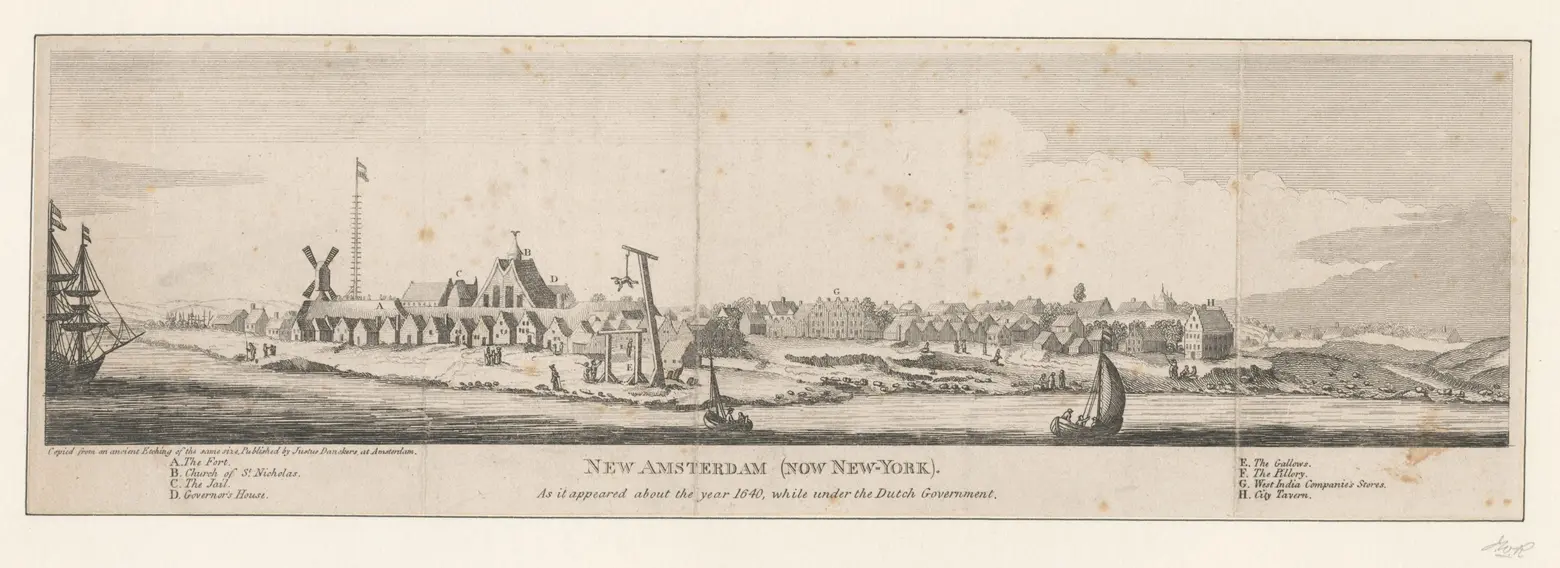 The Miriam and Ira D. Wallach Division of Art, Prints and Photographs: Print Collection, The New York Public Library. “New Amsterdam (now New York) as it appeared about the year 1640” The New York Public Library Digital Collections. 1640 – 1904.
The Miriam and Ira D. Wallach Division of Art, Prints and Photographs: Print Collection, The New York Public Library. “New Amsterdam (now New York) as it appeared about the year 1640” The New York Public Library Digital Collections. 1640 – 1904.
Succeeding Kieft was Peter (or Petrus) Stuyvesant, who moved from his position as the director of the Dutch West India Company’s colony in Curaçao. He is credited with expanding the city northward from the southern tip, erecting a protective wall on what is today Wall Street, and creating a canal on today’s Broad Street and Broadway. But Stuyvesant, too, came with his own controversies. He was adamantly against religious freedom, instead pushing for the supremacy of the Dutch Reformed Church and taking away the right to worship of Lutherans, Quakers, and Catholics. He was especially vocal against Jewish settlers, even going so far as to ban them from entering the colony.
So when England’s Navy arrived on August 26th in Gravesend Bay, Stuyvesant did not have the backing of the Dutch needed to resist. The saga actually began in March, when King Charles II gave the land between the Delaware and Connecticut Rivers to his younger brother James, the Duke of York, in exchange for four beaver pelts. The Duke and the Dutch West India Company had already become rivals over the slave trade, and by that July, New Amsterdam’s 9,000 residents became fearful of a surprise British invasion.
Despite the fact that the Netherlands would only supply Stuyvesant with 150 soldiers and provided no gunpowder for his cannons, when Colonel Richard Nicolls drew up a 23-point Articles of Capitulation, which promised “life, estate, and liberty to all who would submit to the king’s authority,” Stuyvesant initially shredded it up. However, others close to him, including his teenage son, pieced it back together and convinced him to accept.
On September 8th, Stuyvesant signed the treaty at his home on the Bowery (then known as Bouwerij, Dutch for “farm”), and Nicolls immediately took control and renamed the city New York.
In 1673, as part of the Third Angl0-Dutch War, the Dutch briefly took back Manhattan after a 600-man invasion. They returned it the following year, though, as part of a deal that allowed them to retain Suriname in South America.
RELATED:
- Peter Stuyvesant’s NYC: From the Bouwerie Farm to That Famous Pear Tree
- Before NYC’s Slave Market, Freedmen from Africa Were Allowed to Own Farmland
- For $125K, you can buy the first map to credit Henry Hudson
Editor’s Note: This story was originally published on September 8, 2017.
